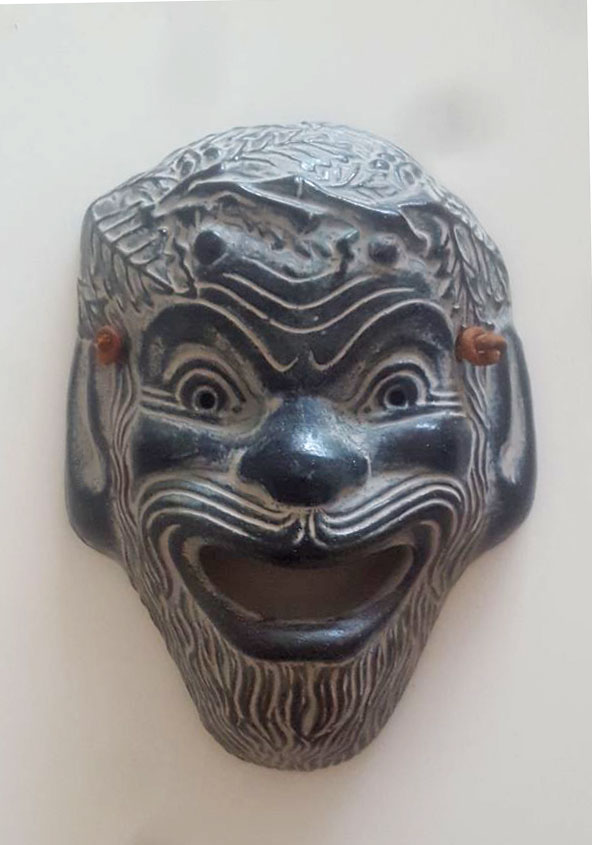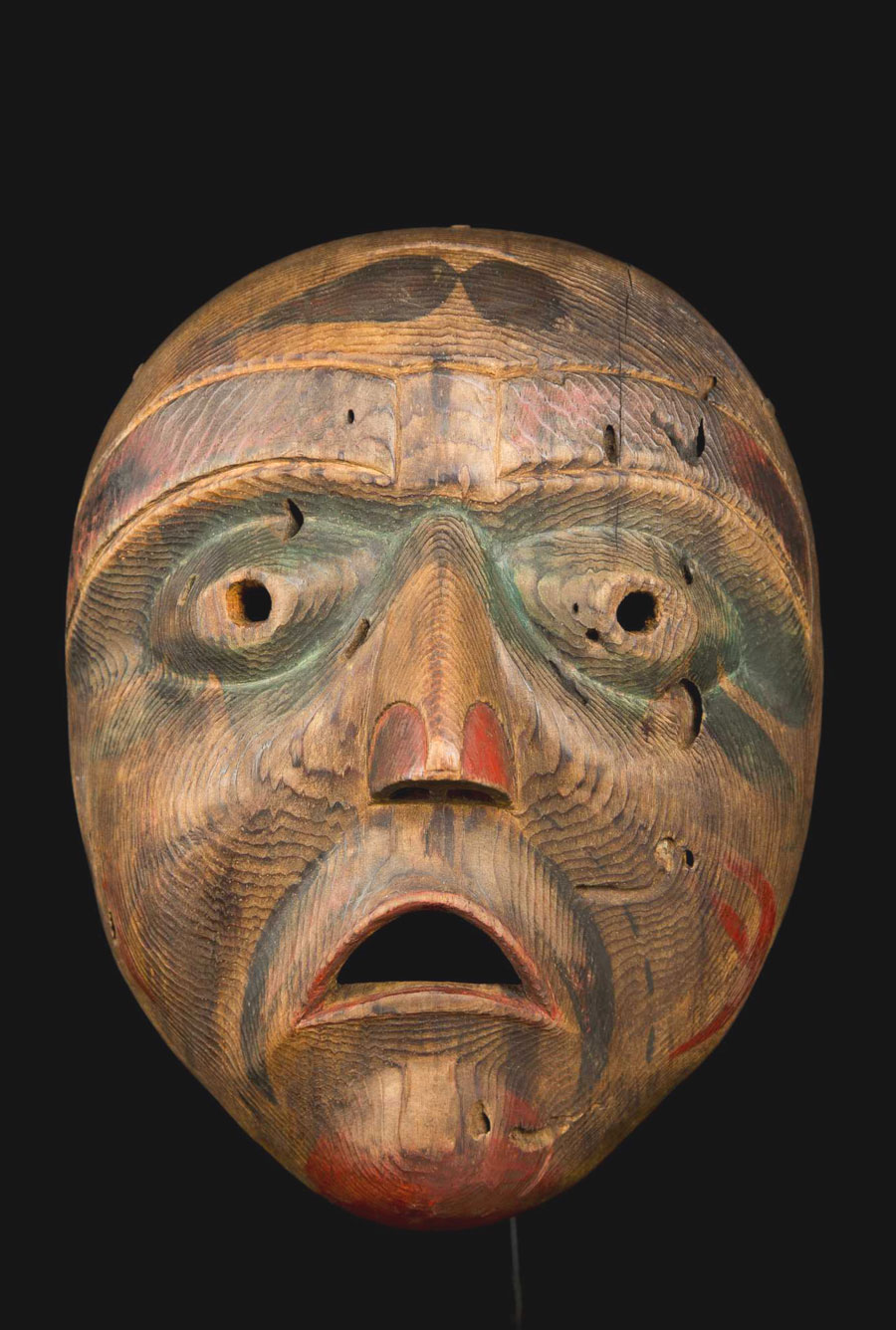 Q: Could you please tell me if this mechanical eye mask is from Michoacán or Guatamala? I was told it is used in dance ceremonies. Is it old? Please advise. Paula, 1420 Q: Could you please tell me if this mechanical eye mask is from Michoacán or Guatamala? I was told it is used in dance ceremonies. Is it old? Please advise. Paula, 1420
A: Paula says she does not collect masks. Yet, the experienced Mask Man reacted exactly the same as she did. That face at first reminded me of Guatemala, then I quickly realized it was a hermit in the Pastorela dance that is celebrated by the Tarascan people of northern Michoacan. It could also be a viejo (old man). Finally I looked at it more carefully and could tell it was old and used. A
Mexican masks can be grouped in two categories: (1) traditional masks used in celebration and ceremonial dances, and (2) decorative masks made for aesthetic purposes and usually bought by collectors or foreign tourists. Most masks are painted wood, although clay, stone and papier mache are also used to make them. This mask is in the first category and a nice find for serious collectors.
Evidence of mask making in Mexico extends for thousands of years and was a well-established part of ritual life in Mexico when the Spanish arrived. In the early colonial period, evangelists took advantage of native customs of dance and mask to teach the Catholic faith although later, colonial authorities tried to ban both unsuccessfully. After Independence, mask and dance traditions continued to evolve into new forms, depicting Mexico’s history and newer forms of popular culture. Common depictions in masks include Europeans (Spanish, French, hacienda owners, etc.), Afro-Mexicans, old men and women, animals, and the fantastic/supernatural, especially demons/the Devil. The wonderful world of masquerade is alive and well in Mexico. |


 Small copy of ancient Japanese mask
Small copy of ancient Japanese mask
 Old Bella Coola mask from the NWC
Old Bella Coola mask from the NWC